Enzo Tartaglione
Beyond Low-rank Decomposition: A Shortcut Approach for Efficient On-Device Learning
May 08, 2025Abstract:On-device learning has emerged as a promising direction for AI development, particularly because of its potential to reduce latency issues and mitigate privacy risks associated with device-server communication, while improving energy efficiency. Despite these advantages, significant memory and computational constraints still represent major challenges for its deployment. Drawing on previous studies on low-rank decomposition methods that address activation memory bottlenecks in backpropagation, we propose a novel shortcut approach as an alternative. Our analysis and experiments demonstrate that our method can reduce activation memory usage, even up to $120.09\times$ compared to vanilla training, while also reducing overall training FLOPs up to $1.86\times$ when evaluated on traditional benchmarks.
I-INR: Iterative Implicit Neural Representations
Apr 24, 2025Abstract:Implicit Neural Representations (INRs) have revolutionized signal processing and computer vision by modeling signals as continuous, differentiable functions parameterized by neural networks. However, their inherent formulation as a regression problem makes them prone to regression to the mean, limiting their ability to capture fine details, retain high-frequency information, and handle noise effectively. To address these challenges, we propose Iterative Implicit Neural Representations (I-INRs) a novel plug-and-play framework that enhances signal reconstruction through an iterative refinement process. I-INRs effectively recover high-frequency details, improve robustness to noise, and achieve superior reconstruction quality. Our framework seamlessly integrates with existing INR architectures, delivering substantial performance gains across various tasks. Extensive experiments show that I-INRs outperform baseline methods, including WIRE, SIREN, and Gauss, in diverse computer vision applications such as image restoration, image denoising, and object occupancy prediction.
Efficient Adaptation of Deep Neural Networks for Semantic Segmentation in Space Applications
Apr 22, 2025Abstract:In recent years, the application of Deep Learning techniques has shown remarkable success in various computer vision tasks, paving the way for their deployment in extraterrestrial exploration. Transfer learning has emerged as a powerful strategy for addressing the scarcity of labeled data in these novel environments. This paper represents one of the first efforts in evaluating the feasibility of employing adapters toward efficient transfer learning for rock segmentation in extraterrestrial landscapes, mainly focusing on lunar and martian terrains. Our work suggests that the use of adapters, strategically integrated into a pre-trained backbone model, can be successful in reducing both bandwidth and memory requirements for the target extraterrestrial device. In this study, we considered two memory-saving strategies: layer fusion (to reduce to zero the inference overhead) and an ``adapter ranking'' (to also reduce the transmission cost). Finally, we evaluate these results in terms of task performance, memory, and computation on embedded devices, evidencing trade-offs that open the road to more research in the field.
RD Efficient FPGA Deployment of Learned Image Compression: Knowledge Distillation and Hybrid Quantization
Mar 05, 2025



Abstract:Learnable Image Compression (LIC) has shown the potential to outperform standardized video codecs in RD efficiency, prompting the research for hardware-friendly implementations. Most existing LIC hardware implementations prioritize latency to RD-efficiency and through an extensive exploration of the hardware design space. We present a novel design paradigm where the burden of tuning the design for a specific hardware platform is shifted towards model dimensioning and without compromising on RD-efficiency. First, we design a framework for distilling a leaner student LIC model from a reference teacher: by tuning a single model hyperparameters, we can meet the constraints of different hardware platforms without a complex hardware design exploration. Second, we propose a hardware-friendly implementation of the Generalized Divisive Normalization (GDN) activation that preserves RD efficiency even post parameter quantization. Third, we design a pipelined FPGA configuration which takes full advantage of available FPGA resources by leveraging parallel processing and optimizing resource allocation. Our experiments with a state of the art LIC model show that we outperform all existing FPGA implementations while performing very close to the original model in terms of RD efficiency.
Diffusing DeBias: a Recipe for Turning a Bug into a Feature
Feb 13, 2025



Abstract:Deep learning model effectiveness in classification tasks is often challenged by the quality and quantity of training data which, whenever containing strong spurious correlations between specific attributes and target labels, can result in unrecoverable biases in model predictions. Tackling these biases is crucial in improving model generalization and trust, especially in real-world scenarios. This paper presents Diffusing DeBias (DDB), a novel approach acting as a plug-in for common methods in model debiasing while exploiting the inherent bias-learning tendency of diffusion models. Our approach leverages conditional diffusion models to generate synthetic bias-aligned images, used to train a bias amplifier model, to be further employed as an auxiliary method in different unsupervised debiasing approaches. Our proposed method, which also tackles the common issue of training set memorization typical of this type of tech- niques, beats current state-of-the-art in multiple benchmark datasets by significant margins, demonstrating its potential as a versatile and effective tool for tackling dataset bias in deep learning applications.
No Images, No Problem: Retaining Knowledge in Continual VQA with Questions-Only Memory
Feb 06, 2025Abstract:Continual Learning in Visual Question Answering (VQACL) requires models to learn new visual-linguistic tasks (plasticity) while retaining knowledge from previous tasks (stability). The multimodal nature of VQACL presents unique challenges, requiring models to balance stability across visual and textual domains while maintaining plasticity to adapt to novel objects and reasoning tasks. Existing methods, predominantly designed for unimodal tasks, often struggle to balance these demands effectively. In this work, we introduce QUestion-only replay with Attention Distillation (QUAD), a novel approach for VQACL that leverages only past task questions for regularisation, eliminating the need to store visual data and addressing both memory and privacy concerns. QUAD achieves stability by introducing a question-only replay mechanism that selectively uses questions from previous tasks to prevent overfitting to the current task's answer space, thereby mitigating the out-of-answer-set problem. Complementing this, we propose attention consistency distillation, which uniquely enforces both intra-modal and inter-modal attention consistency across tasks, preserving essential visual-linguistic associations. Extensive experiments on VQAv2 and NExT-QA demonstrate that QUAD significantly outperforms state-of-the-art methods, achieving robust performance in continual VQA.
FOLDER: Accelerating Multi-modal Large Language Models with Enhanced Performance
Jan 05, 2025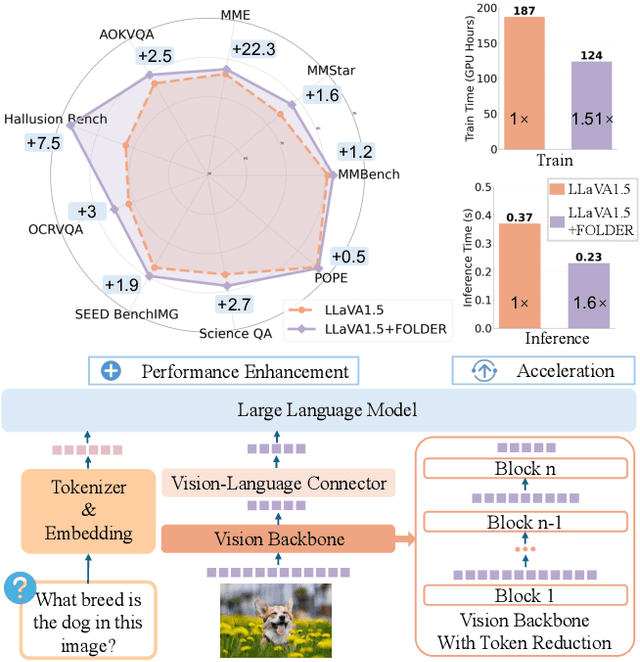
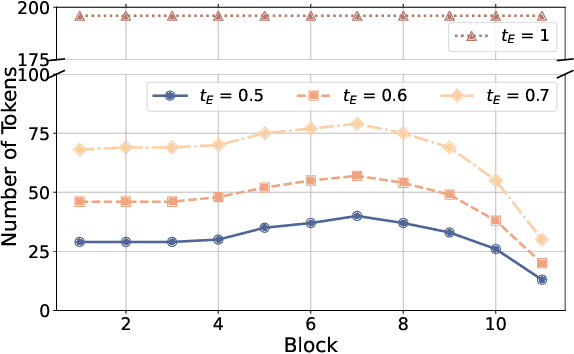
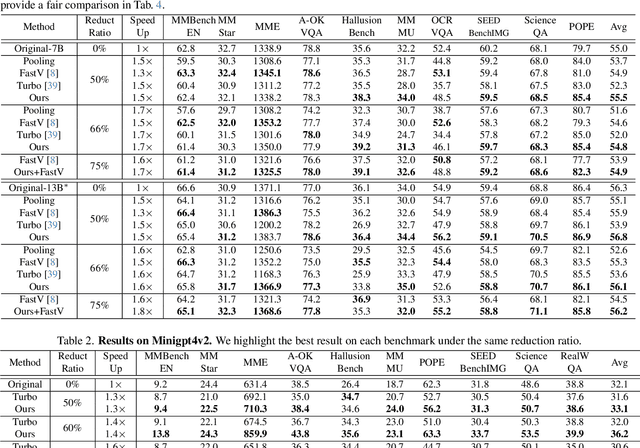
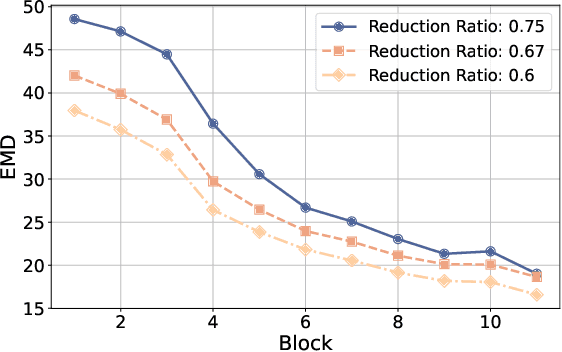
Abstract:Recently, Multi-modal Large Language Models (MLLMs) have shown remarkable effectiveness for multi-modal tasks due to their abilities to generate and understand cross-modal data. However, processing long sequences of visual tokens extracted from visual backbones poses a challenge for deployment in real-time applications. To address this issue, we introduce FOLDER, a simple yet effective plug-and-play module designed to reduce the length of the visual token sequence, mitigating both computational and memory demands during training and inference. Through a comprehensive analysis of the token reduction process, we analyze the information loss introduced by different reduction strategies and develop FOLDER to preserve key information while removing visual redundancy. We showcase the effectiveness of FOLDER by integrating it into the visual backbone of several MLLMs, significantly accelerating the inference phase. Furthermore, we evaluate its utility as a training accelerator or even performance booster for MLLMs. In both contexts, FOLDER achieves comparable or even better performance than the original models, while dramatically reducing complexity by removing up to 70% of visual tokens.
Till the Layers Collapse: Compressing a Deep Neural Network through the Lenses of Batch Normalization Layers
Dec 19, 2024
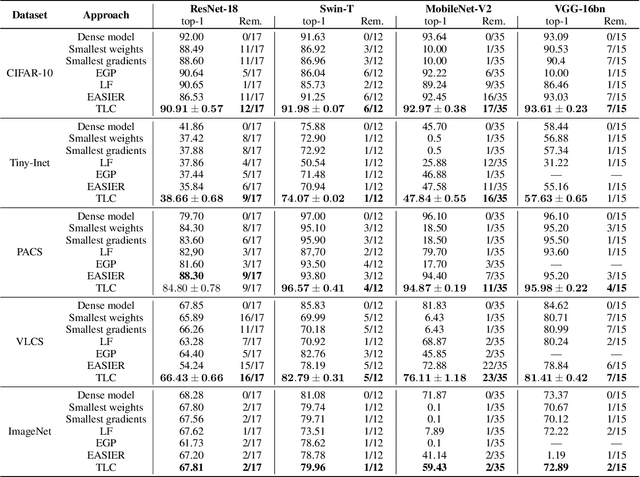
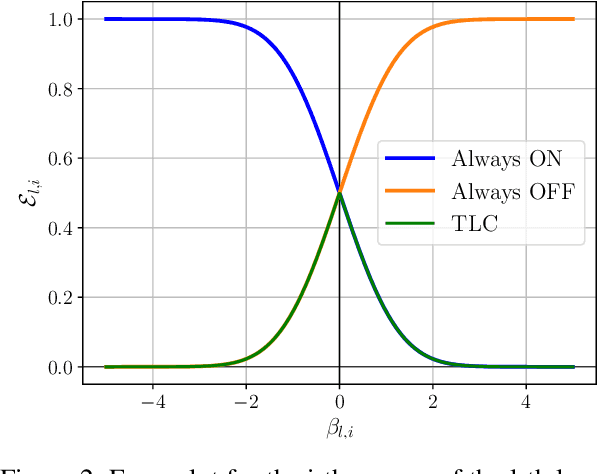
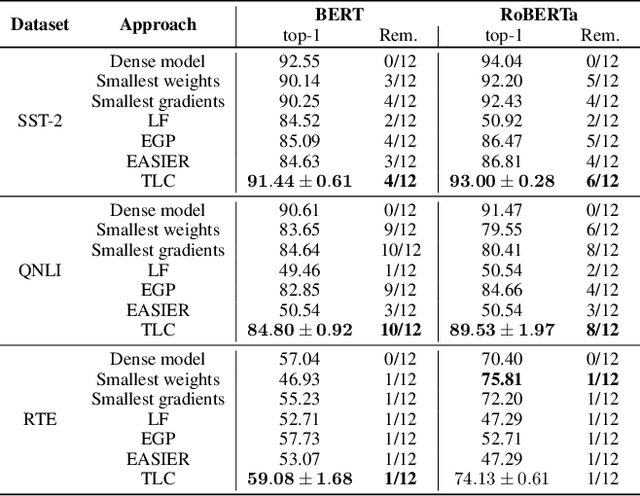
Abstract:Today, deep neural networks are widely used since they can handle a variety of complex tasks. Their generality makes them very powerful tools in modern technology. However, deep neural networks are often overparameterized. The usage of these large models consumes a lot of computation resources. In this paper, we introduce a method called \textbf{T}ill the \textbf{L}ayers \textbf{C}ollapse (TLC), which compresses deep neural networks through the lenses of batch normalization layers. By reducing the depth of these networks, our method decreases deep neural networks' computational requirements and overall latency. We validate our method on popular models such as Swin-T, MobileNet-V2, and RoBERTa, across both image classification and natural language processing (NLP) tasks.
Efficient Progressive Image Compression with Variance-aware Masking
Nov 15, 2024



Abstract:Learned progressive image compression is gaining momentum as it allows improved image reconstruction as more bits are decoded at the receiver. We propose a progressive image compression method in which an image is first represented as a pair of base-quality and top-quality latent representations. Next, a residual latent representation is encoded as the element-wise difference between the top and base representations. Our scheme enables progressive image compression with element-wise granularity by introducing a masking system that ranks each element of the residual latent representation from most to least important, dividing it into complementary components, which can be transmitted separately to the decoder in order to obtain different reconstruction quality. The masking system does not add further parameters nor complexity. At the receiver, any elements of the top latent representation excluded from the transmitted components can be independently replaced with the mean predicted by the hyperprior architecture, ensuring reliable reconstructions at any intermediate quality level. We also introduced Rate Enhancement Modules (REMs), which refine the estimation of entropy parameters using already decoded components. We obtain results competitive with state-of-the-art competitors, while significantly reducing computational complexity, decoding time, and number of parameters.
Activation Map Compression through Tensor Decomposition for Deep Learning
Nov 10, 2024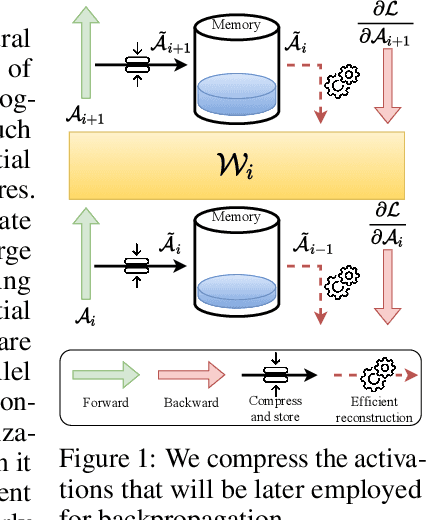

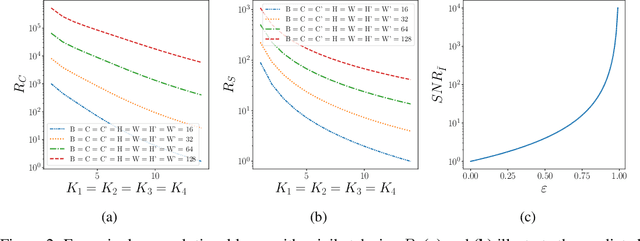

Abstract:Internet of Things and Deep Learning are synergetically and exponentially growing industrial fields with a massive call for their unification into a common framework called Edge AI. While on-device inference is a well-explored topic in recent research, backpropagation remains an open challenge due to its prohibitive computational and memory costs compared to the extreme resource constraints of embedded devices. Drawing on tensor decomposition research, we tackle the main bottleneck of backpropagation, namely the memory footprint of activation map storage. We investigate and compare the effects of activation compression using Singular Value Decomposition and its tensor variant, High-Order Singular Value Decomposition. The application of low-order decomposition results in considerable memory savings while preserving the features essential for learning, and also offers theoretical guarantees to convergence. Experimental results obtained on main-stream architectures and tasks demonstrate Pareto-superiority over other state-of-the-art solutions, in terms of the trade-off between generalization and memory footprint.
 Add to Chrome
Add to Chrome Add to Firefox
Add to Firefox Add to Edge
Add to Edge